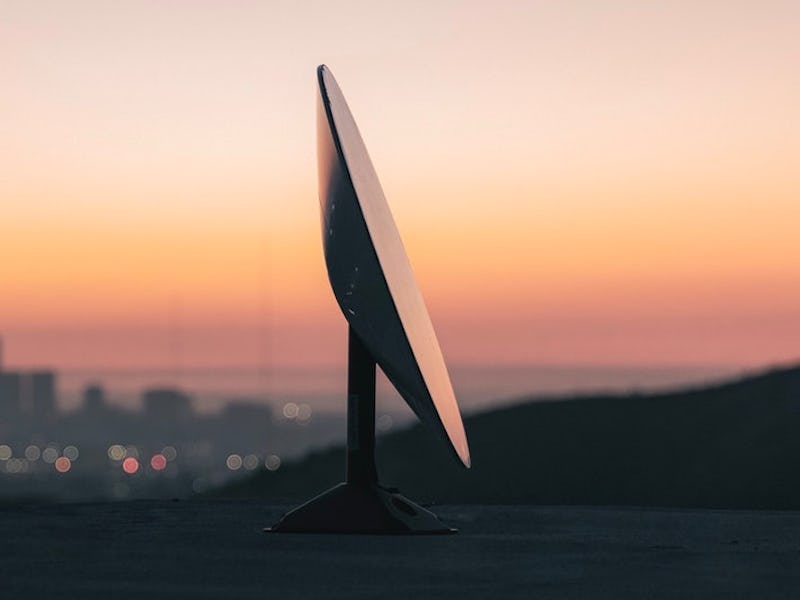Musk Reads: SpaceX Starlink beta test details emerge
Starlink starts taking addresses and Crew Dragon prepares to return home. The Boring Company on Mars?

Starlink starts taking addresses and Crew Dragon prepares to return home. The Boring Company on Mars? It’s Musk Reads: SpaceX Edition #187.
A version of this article appeared in the “Musk Reads” newsletter. Sign up for free here.
Musk quote of the week
“Congratulations MHI & UAE!”
- Read more about the newly launched UAE Mars probe that could help build a Mars city.
What part of the Covid-19 pandemic do you think causes the most confusion? We want to know. Take the Inverse reader survey
SpaceX Starlink
Starlink, SpaceX’s internet connectivity constellation that promises high speeds and low latency in remote areas, is getting closer. Last week saw the unveiling of several key details after a website update. A new frequently asked questions page has revealed several important details about the beta expected to take place later this year.
- It will start with the Northern United States and lower Canada, starting with rural and remote communities in the Washington state area. Users will need to have a clear view of the northern sky.
- The constellation can currently provide service between 44 and 52 degrees latitude.
- The beta service will be nearly free, bar a $1 charge to test the billing system.
- Users will have to answer short surveys over an eight-week period.
- The service probably won’t be as consistent as the final version. SpaceX warns that it probably won’t be suitable for work or video games as the team continues to optimize the network.
- You will have to sign a non-disclosure agreement, which means you can’t publicly share your experiences. The dedicated Starlink subreddit has a message from the moderators claiming they have already received multiple takedown requests relating to non-disclosure agreements.
Last week, SpaceX also started taking more detailed addresses for participants. Interested parties can register on the main website.
The website update also provided the clearest images yet of the ground terminal. This will be used to maintain a connection with the satellites. SpaceX expects to send out the terminals to beta testers via FedEx, which will be pre-assembled with a dish, router, power supply, and mount. Read more.
What’s next for SpaceX: SpaceX is set to launch the South Korean military satellite Anasis-II on July 20 at Cape Canaveral Air Force Station in Florida. This mission will use the same booster that sent NASA astronauts Doug Hurley and Bob Behnken to the International Space Station in May. The company’s previously scheduled 10th Starlink mission has been delayed and currently has no new launch date.
In other Musk news…
- SpaceX has delayed the launch of the Anasis-II satellite as it completes checks on the second stage. The delay means the firm missed out on breaking its record for rocket reuse times that are currently set at 62 days. Read more.
- The Crew Dragon capsule, which carried NASA astronauts Bob Behnken and Doug Hurley to the International Space Station in May, is preparing to return home on August 2.
- The Falcon 9 rocket for the next Crew Dragon mission has arrived.
- The latest episode of the Altamar podcast has an episode on the future of space travel, featuring Virgin Galactic’s new CEO, George Whitesides.
- Musk and other big tech names, including Jeff Bezos and Bill Gates, found themselves subject to a major Twitter hack last week. Read more.
Musk Reads mailroom
Charles Cleveland writes:
Maybe the Boring Company could add a new twist to colonizing Mars, send up a boring machine and alot of solar panels to charge its batteries and make tunnels for living quarters. Could first be used to mine ice to help make the concrete for the future tunnels, and with any luck, the water will be potable.
Musk himself has suggested the same thing. During a July 2017 event, Musk said that “I do think getting good at digging tunnels could be really helpful for Mars,” adding that “you can build a tremendous amount underground with the right boring technology on Mars.” Musk also highlighted ice mining as a good use. Perhaps one to watch?
Wendell Brown writes:
How much [will Starlink cost]? And will I be able to get the internet here in Gary, In?
Pricing is still unclear, but the beta test costs a one-off payment of $1. During the beta test you’ll need a clear view of the northern sky, and you’ll need to be within the 44 and 52 degrees latitude. That suggests, unfortunately, that you’ll have to wait until after the beta test for expanded coverage.
Got any comments or queries? Don’t forget to send them over to muskreads@inverse.com.
Photo of the week
The SpaceX Starlink terminal.
SpaceX Starlink's terminal.
Got any photos or videos you’d like to share? Feel free to send them over to muskreads@inverse.com.
The ultra-fine print
This has been Musk Reads: SpaceX Edition #187, the weekly rundown of essential reading about futurist and entrepreneur Elon Musk. I’m Mike Brown, an innovation journalist for Inverse.
- Email me directly at mike.brown@inverse.com and follow Inverse on Twitter @inversedotcom. Follow me on Twitter @mikearildbrown.
- Got any comments or queries? Don’t forget to send them over to muskreads@inverse.com.
What did you think of today’s stories? Hit reply to this email to let us know. Thanks for reading!
A version of this article appeared in the “Musk Reads” newsletter. Sign up for free here.